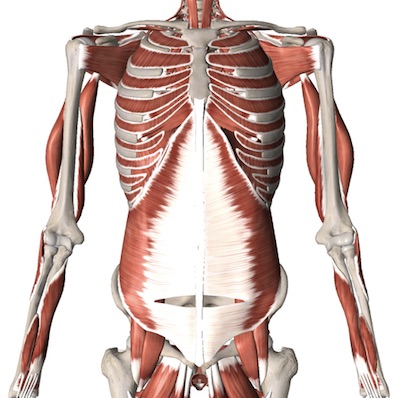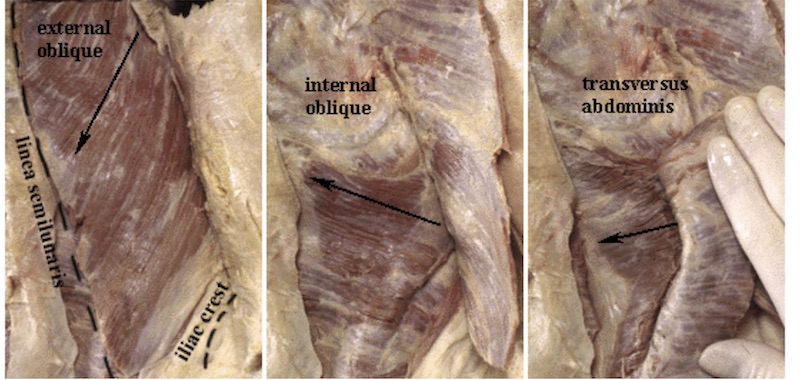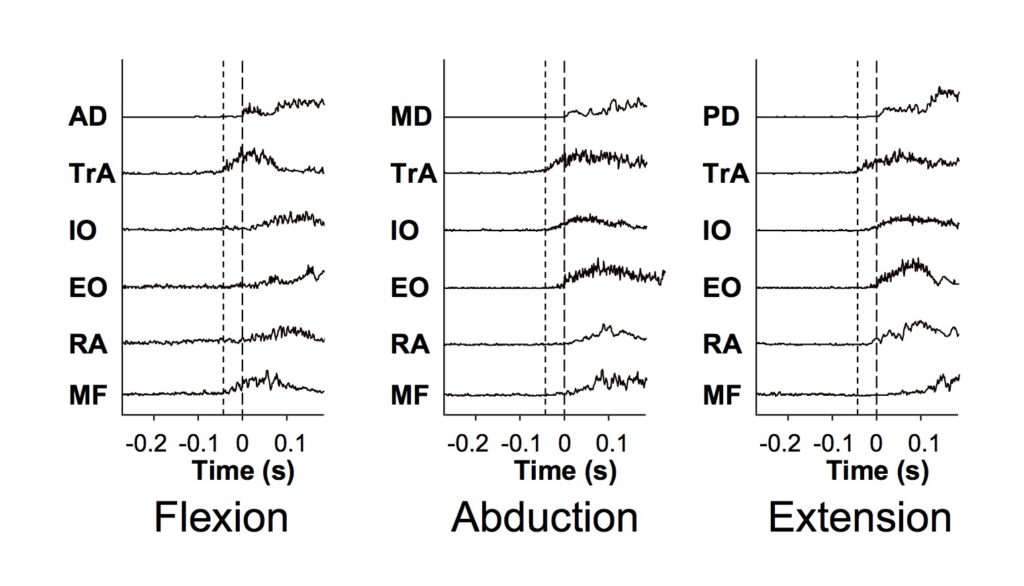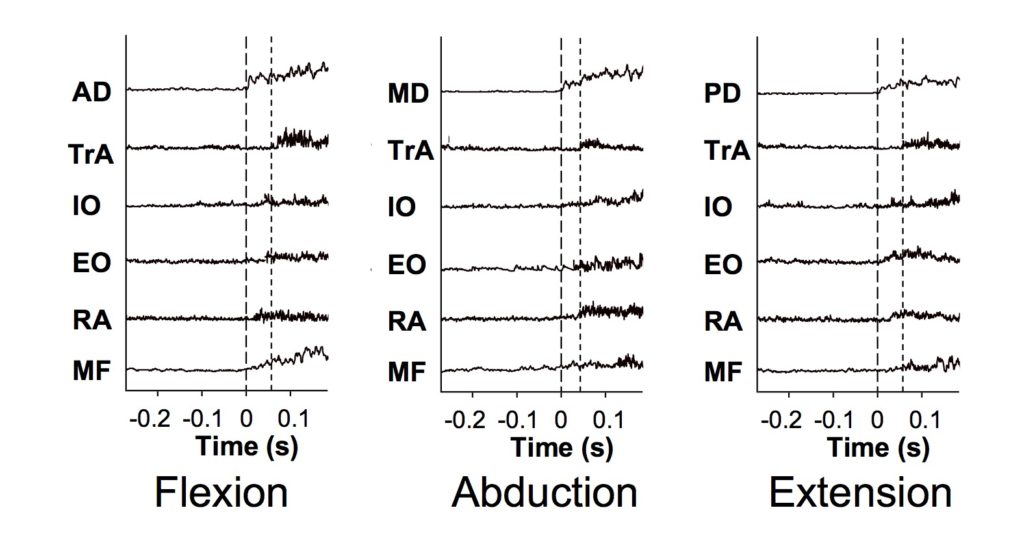Transverse Abdominis Anatomy
Origin:
Inner surface of cartilages of lower 6 ribs, interdigitation with diaphragm, thoracolumbar fascia, anterior 3⁄4 of internal lip of iliac crest, and lateral 1/3 of inguinal ligament
Insertion:
Linea alba (broad aponeurosis), pubic crest, and pecten pubis
Nerve Innervation:
T7-T12, L1 (iliohypogastric and ilioinguinal)


Actions of Transverse Abdominis
- Flattens abdominal wall and compress the abdominal viscera.
- Decrease infrasternal angle of ribs in expiration (upper portion of TrA).
- No Action in lateral trunk flexion, except to compress the viscera and to stabilize linea alba (better action of anterolateral trunk muscles).
Weakness in TrA (observations) (Kendall et al.)
Standing position:
Permits bulging of anterior abdominal wall (increases lordosis).
Supine position:
During flexion a lateral bulge tends to occur.
Prone position:
Hyperextension of trunk with lateral bulge tends to occur.
Delayed Motor Control of Transverse Abdominis:
- A motor control deficit is present in subjects with low back pain
- Activation of transverse abdominis is significantly delayed
- The timing delay is independent of the type or nature of pathology


